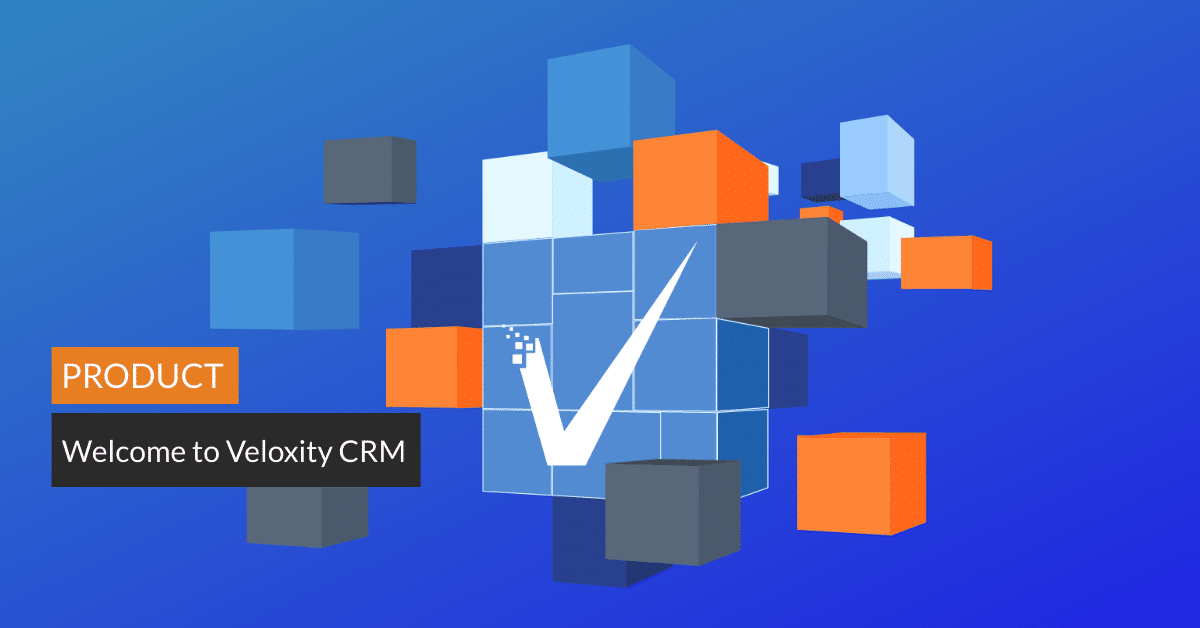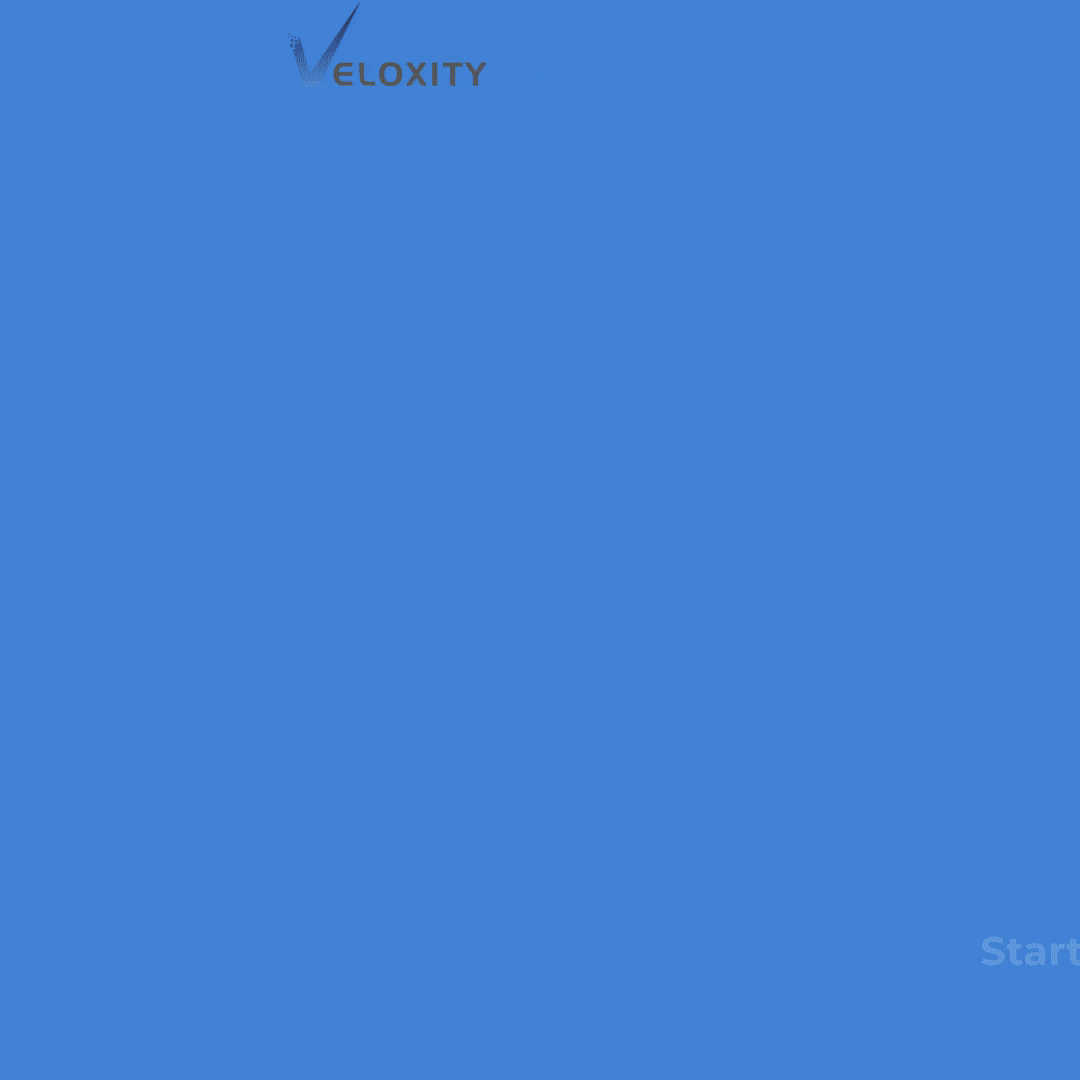Welcome to Veloxity

Background
As the CEO of Veloxity, writing my introductory blog post, I decided to address the most common question I get: Why did you decide to enter this already crowded CRM market occupied by big players like Salesforce and Microsoft? This is a legitimate question and deserves to be asked and answered.
Roots in CRM
First, some background on me is in order for context. My own roots in customer relationship management (CRM) go back to working for the leader at that time (circa 1999) at a company called Siebel Systems. Siebel was not a web-based CRM but a product that required installation of the CRM software directly on your machine. Siebel experienced significant growth in the late nineties in part due to the year 2000 issues.
It was an exciting time to be part of something experiencing this level of hypergrowth. That growth, however, ended with the market crash of 2000, and Oracle computer ultimately bought Siebel for a song in 2005.
Since then, I became familiar with several other CRMs as a customer through hands-on usage and started to understand the various types of SaaS CRMs. I also began to see the weaknesses in the existing solutions, which made both setting them up and using them painful. More on that later (read more about Salesforce® CRM Competitors).
Starting Sapio Sciences
After my tenure at Siebel systems, I started Sapio Sciences.
Sapio is a software company created initially to use machine learning to analyze genetic data. The initial product, Exemplar Analytics, experienced some modest success, but it was clear to me that it would never be big business at that time due to being very early in the genetics data market.
We transitioned Sapio Sciences to create a platform to address the Laboratory Information Management System (LIMS) and Electronic Lab Notebook (ELN) markets. The first version of that platform was released 14 years ago in 2007.
In developing this platform, we made a critical decision early on to keep the platform agnostic to application. In other words, even though the platform was serving the life sciences market, the platform itself was not related to life sciences or to any other domain (read about our CRM for Life Sciences).
This turned out to be a good decision as we created a world-class application framework that has now been exercised in very demanding production environments. I don’t know the exact day, but roughly three years ago, we began to see the potential to use our platform in other markets. We felt that we are able to compete with the best platforms in the world that underpin other well-known applications.
Building Veloxity CRM on our platform
So we decided that it was time to let our platform out to play in new applications areas beyond life sciences lab management. We set our sights on the CRM space. I will explain below why we chose this application versus others. This was no small effort in and of itself.
We spent two years extending our already broad platform to support CRM application needs. We had to create the whole SaaS infrastructure to handle the management of the large volume of trials and customers we expected to have while continuing to provide best in class performance. After lots of work, we are finally done and ready to introduce Veloxity CRM to the world.
Why is a platform important?
Platforms are powerful. A platform implies a software application that can be configured and customized to perform almost any function. A CRM system built on a platform can be configured to function precisely as each customer needs and enables the system to grow and change with the customer’s needs over time.
Not all CRMs are platforms. In fact, most are not. The CRM market essentially breaks down into two main categories:
- Non-platform CRMs. Minimally configurable, relatively hard-wired CRM solutions. A non-platform CRM is confined to what the application offers out of the box. There is no room to grow. These CRM solutions do a great job providing a fixed set of CRM functions. They may have one or two “sizzle” features to grab your attention. Over 90% of the CRM’s on the market today fit into this category.
- Platform-based CRMs. Highly configurable and extendible CRM solutions. Only a handful of vendors such as SalesForce, Microsoft, and SAP offer a true platform. Most CRMs are not in this category. Platforms are very hard and complicated to make. These solutions can enable you to personalize the CRM and even extend the system into other areas such as financials and inventory management.
Given that platforms are inherently more flexible, why do the non-platform solutions ever get licensed?
The big platform solutions are suffering from ease of use issues, lack of innovation on fundamental CRM functions, and have become bloatware. Some of the smaller players, while lacking flexibility, are much simpler to use. Some of these smaller CRMs include a few smart interface innovations that compel trial users to license these solutions.
This is problematic in two ways: On the one hand, the larger, more flexible CRM solutions have become so unwieldy that the smaller players have a market; however, when companies choose the smaller, easier to use, non-platform CRM solutions, they are now constrained to a system that lacks the flexibility to expand as their customers’ needs grow. Eventually, end-users will have to transition out of these solutions and into something else.
Both types of CRM solutions require making a compromise. You either get a system with a cool feature or two, but it can’t be adapted to your needs, or you get a system that is likely harder to use and expensive to implement.
How does Veloxity fit into this story?
As we examined the available solutions in the CRM market in detail, several things became clear to us:
- The best approach is to have a platform. Platforms convey the greatest flexibility to customers. However, even for those solutions that offer platforms, the administration is complex. They have become bloated with hundreds of features that weren’t part of the original design, making them very hard to understand, configure, and extend. All of these features have led to excessive implementation costs and timelines, along with an unacceptably high percentage of project failures.
- While many vendors in both categories offer great solutions, there seems to have been very little innovation on fundamental CRM features, particularly around the user interactions with the system. The products are mostly “me too” solutions with minor variations.
- While machine learning and statistics has been a hot topic, its application in the CRM domain has been minimal and therefore, has had a negligible impact on the system’s value.
- System performance is often very slow and does not seem to scale well with data volume increases.
Each of these problems creates opportunities for better solutions that we felt we could capitalize on. This is why we decided to enter the CRM market. Addressing any one of these problems would convey an advantage for customers. Addressing all of them would offer a notably significant advantage over the entire CRM market.
Since we don’t like to shy away from big challenges, we decided to be bold and tackle all four of these problems from the outset.
In our first version of Veloxity CRM, we have innovated in several key areas:
- For over a decade, we have refined our platform. Veloxity is as configurable and extensible as the leading solutions, but much easier to administer and setup. Veloxity employs thoughtful design as well as offers configurations not available in other solutions. This cleaner and more modern design means that Veloxity can be set up and ready to use faster and at a much lower cost than with competitive solutions. This platform is tried-and-true from day one and has been vetted by large multinational deployments.
- On the innovation front and from an end-user perspective, we are providing several key features, including the following:
- What we believe is market-leading management and visualizations of territories (or sales teams). You can, at a glance, see at any level of the reporting structure, how each person/group is performing against their quota for past, current, and future forecast periods. From this same graphical view, you can easily set quotas and add new sales divisions or account managers.
- Very strong out of the box quote creation with a built-in PDF generator. Soon we will release a full report builder module where users can create professional PDF reports from system data.
- We believe we also have the most intuitive and powerful search tools. Any user can easily search and find what they need. With support for Query By Example and term-based searching, as well as cross hierarchy searching, regular users can now perform searches that previously required experts to set up.
- Users often work with tables of data. Sometimes very large tables. We noticed that no other products had good table data editing capabilities. We put a significant emphasis on enabling multi-row editing of data tables with copy/paste in and out support as well as autofill of data. This makes working with multiple rows of data much easier and faster, saving companies significant time and money.
- What we believe is market-leading management and visualizations of territories (or sales teams). You can, at a glance, see at any level of the reporting structure, how each person/group is performing against their quota for past, current, and future forecast periods. From this same graphical view, you can easily set quotas and add new sales divisions or account managers.
- My own background is in machine learning (ML) and statistics. We see several significant opportunities to dramatically improve on key metrics and scoring using advanced stats and ML methods combined with historical system data. Stay tuned for more on this later. Initially, we are applying machine learning to evaluate existing system data to assign proper probabilities to opportunities at the different sales stages in the system. This means the more data you collect over time, the smarter the system gets. This impacts your forecast by improving forecast accuracy.
- The foundation of Veloxity has been scale tested at huge data volumes and high levels of concurrency to ensure Veloxity can meet even the most demanding needs of multinational organizations. Veloxity even includes special data types called high volume data types that can scale to 10s of millions of records without impacting system performance.
Creating Value
If you look at the pricing for all CRM systems, they offer a set of “Editions” for their product. Each edition has a fixed price associated with it. The editions are usually something like Professional, Enterprise, etc. and the prices can escalate quickly as you go up the edition chain.
The problem with this approach is it limits the buyer’s power to choose the features they want and don’t want. With this approach, the user may want a feature in the enterprise edition but don’t actually care about the 9 other features that come with that edition. But to get that feature they need to buy that edition, which incurs a potentially much greater cost. Veloxity breaks from this model.
Veloxity CRM offers an innovative a la carte model.
We offer a single edition that we believe embodies the fundamental features needed by most any B2B or B2C organization. If you want to expand capabilities you can select ala carte the ones you want. Each feature has its own price and can be added to the base edition. This enables our customers to now have the power to choose what they get so they only pay for what has actual value to them.
Looking Forward
We have an aggressive plan for new features that will be released over the next twelve months. We are working to further what we see as our advantages: ease of use, configurability, and system intelligence.
While we have definitive plans going forward, we remain agile as we listen intently to our customers. When we hear ways to improve and make the system better, we act quickly. We are driven by 100% customer satisfaction.
I actively monitor my personal Twitter account as well as the corporate Twitter account. This is one way among many you can connect with me and share suggestions. You can also use our discussion forums to ask for new features or tweaks to existing ones.
We are grateful to our early customers who have made this exciting rollout possible, and we look forward to supporting all of our customers in any way we can.
Veloxity CRM is a leading provider of Customer Relationship Management (CRM) software enabling you to manage your sales organization, products, and customer data. Veloxity CRM offers best-in-class usability with its innovative Hub, Kanban views, and more such as graphical Sales Division Management, Automated Lead Routing, and Intelligent Forecasting, all reachable through Veloxity’s intuitive, responsive, web-based user interface. Veloxity is a platform that can be tailored to your particular business needs and is suitable for both B2C and B2B businesses. More information about Veloxity CRM is available at www.veloxity.com

